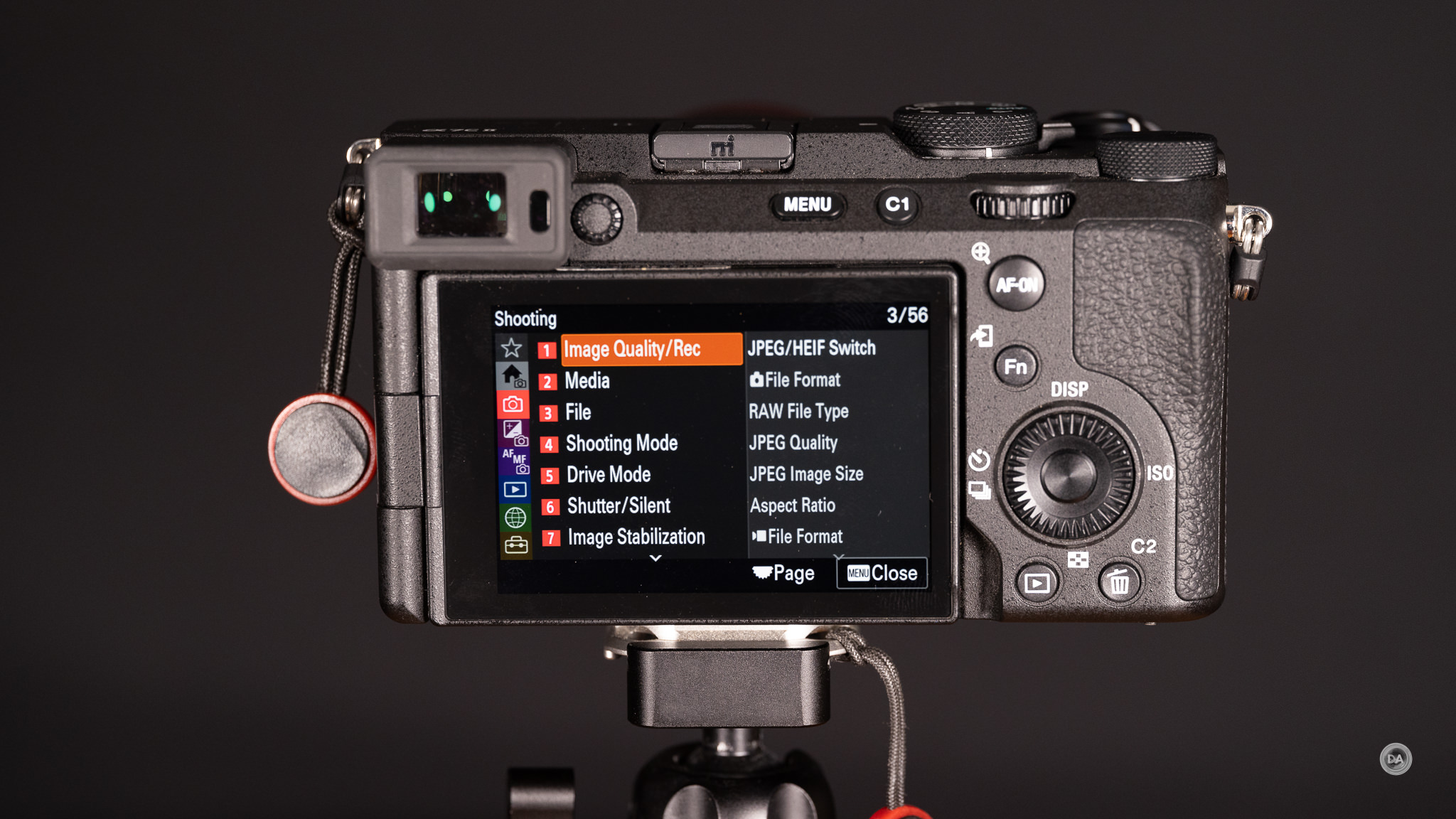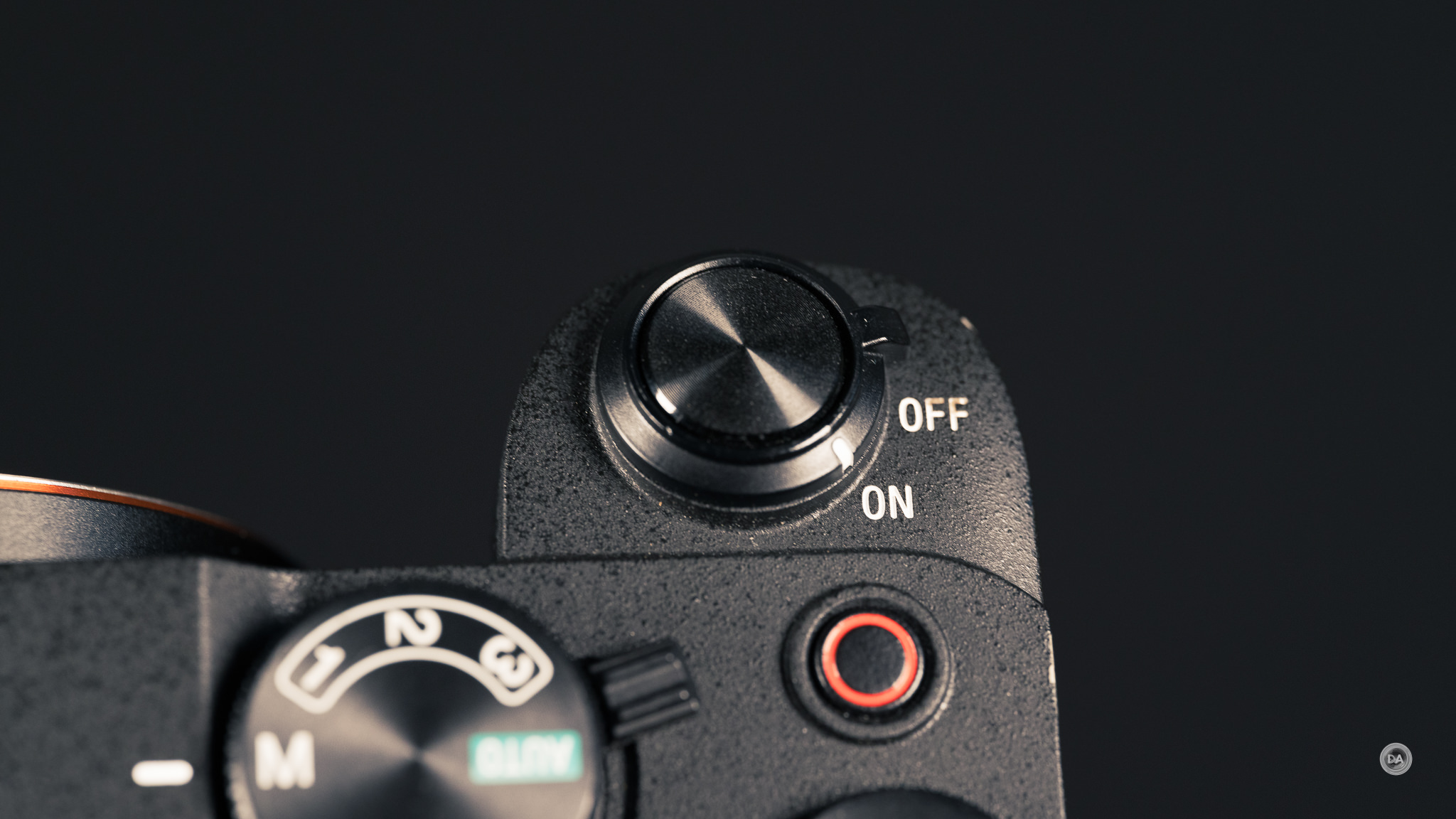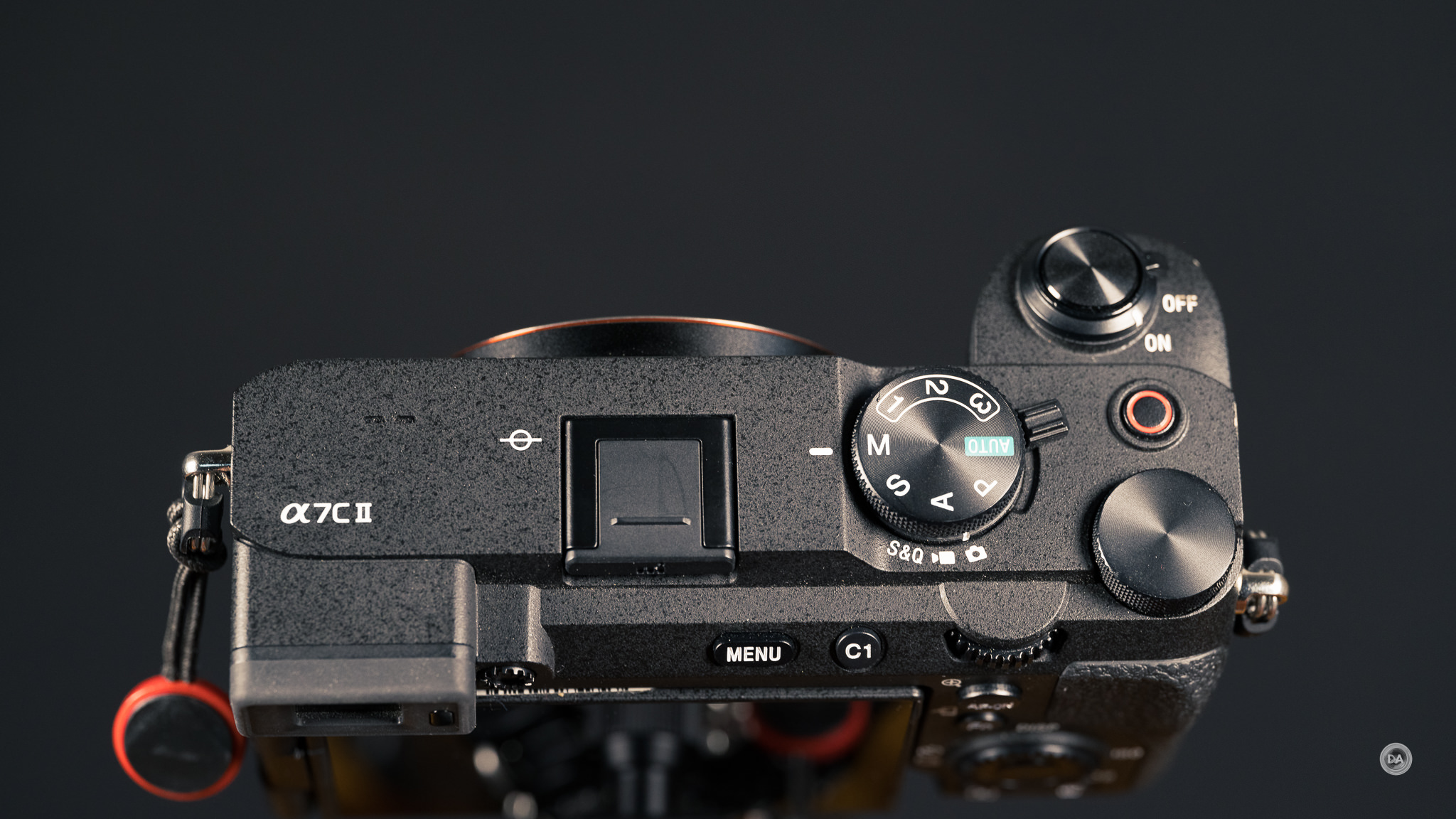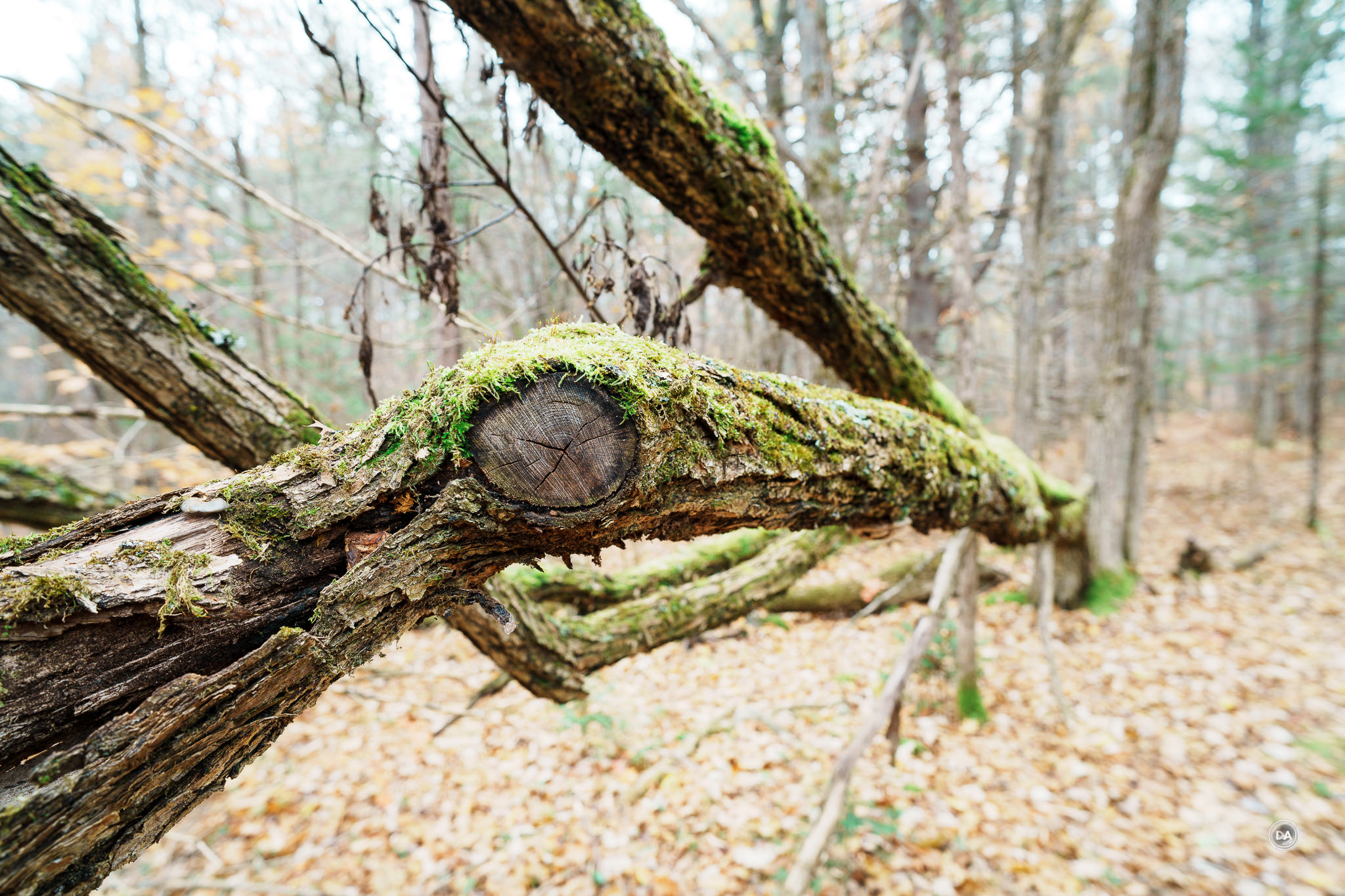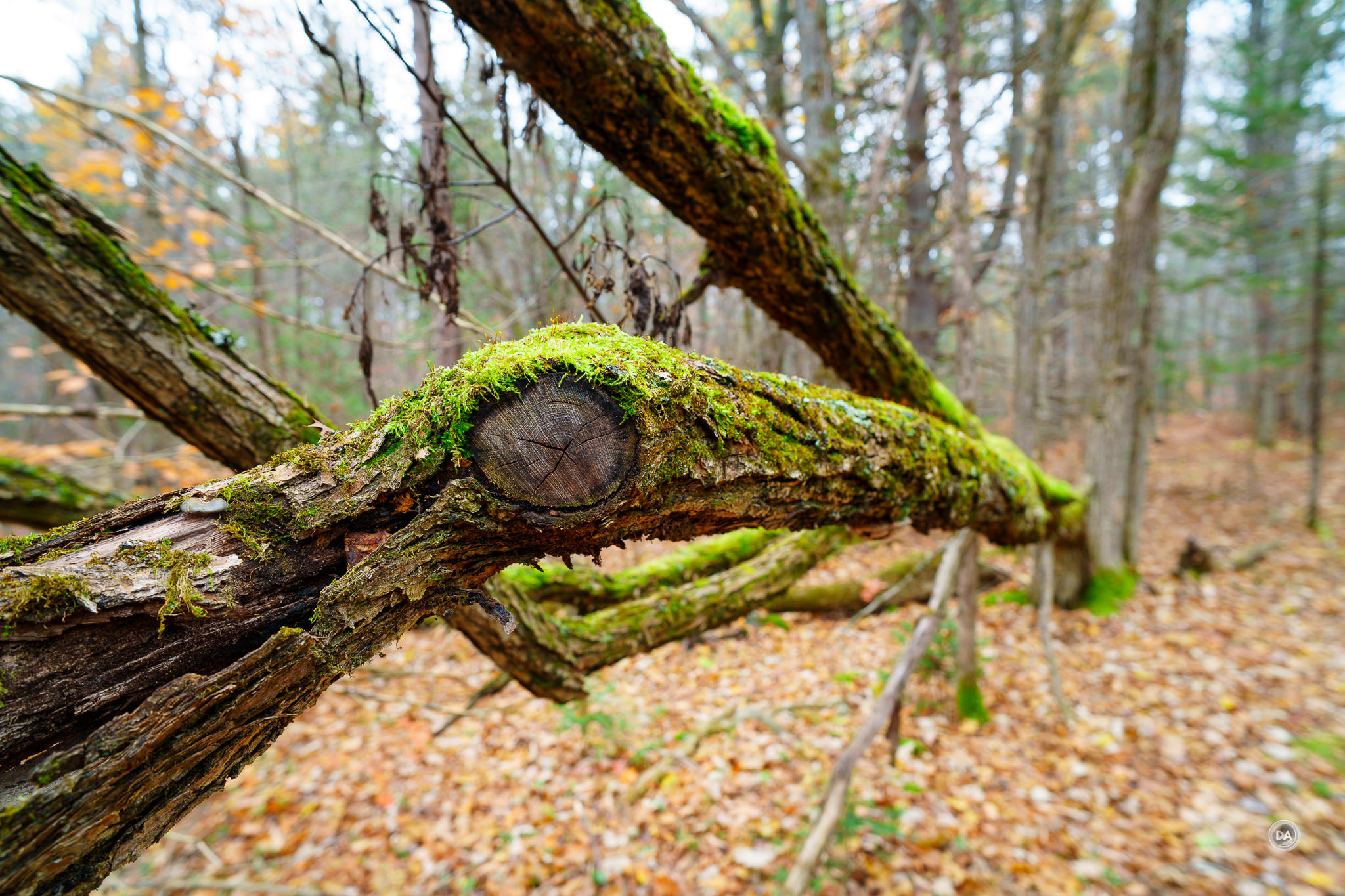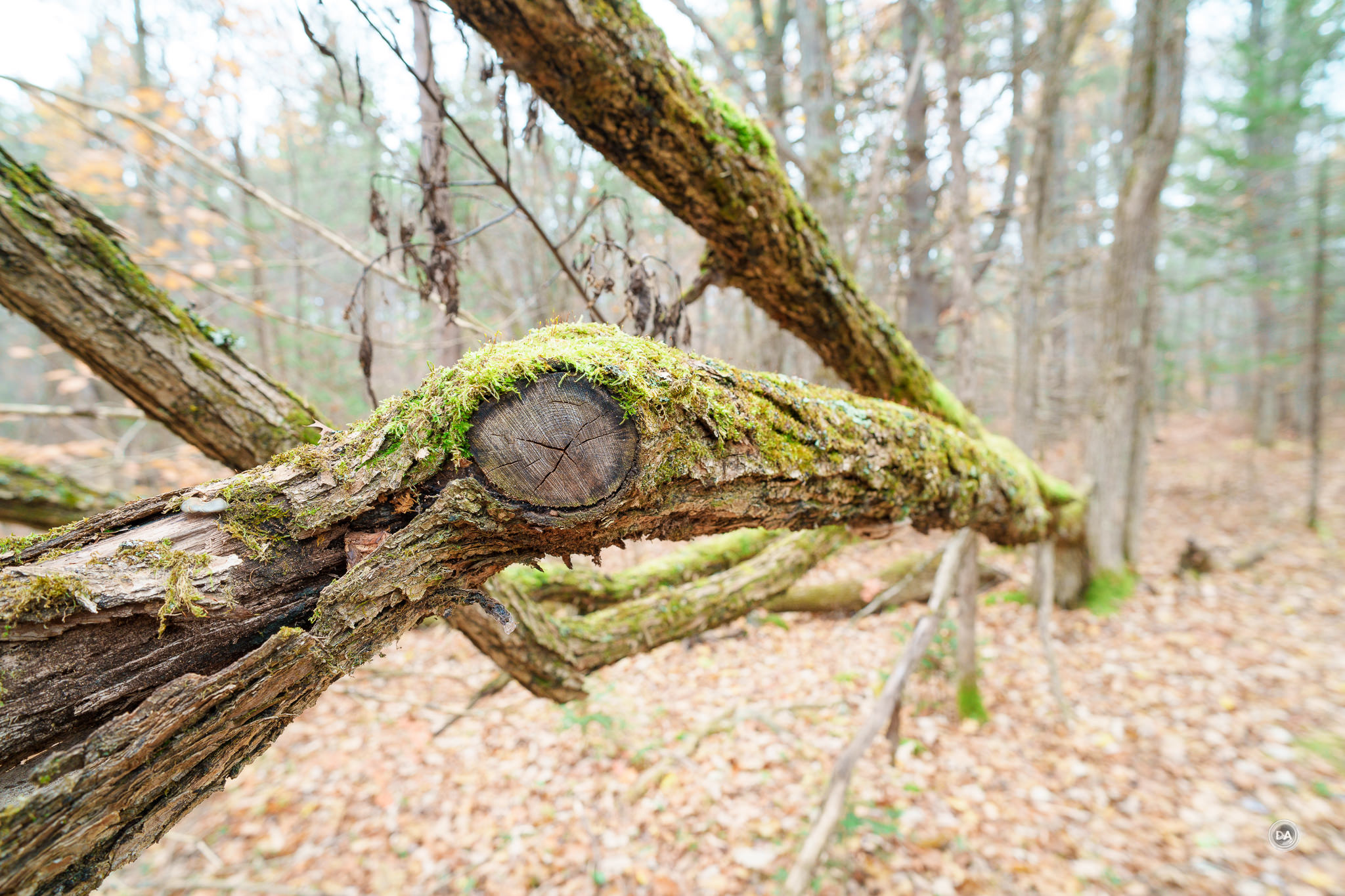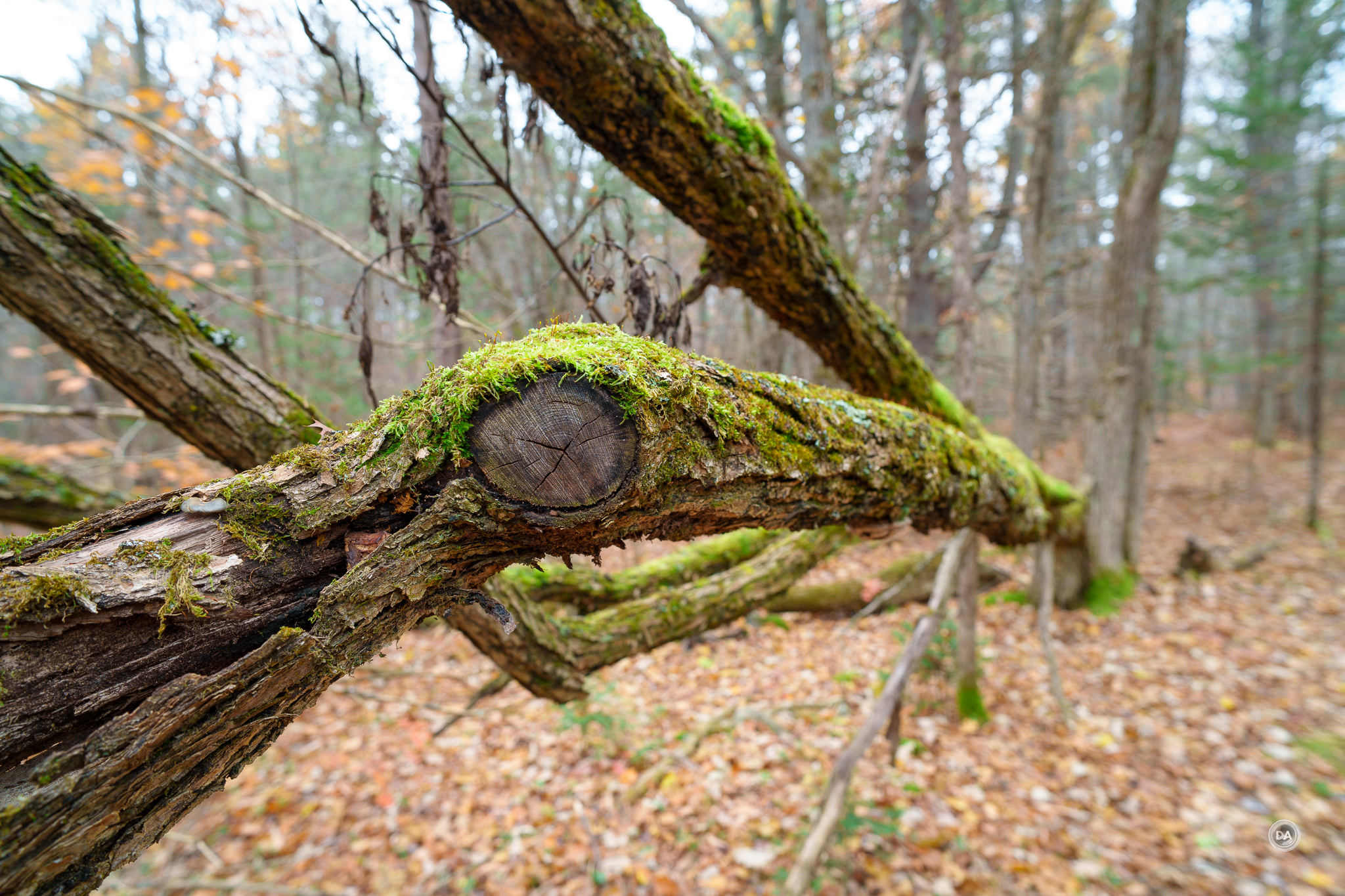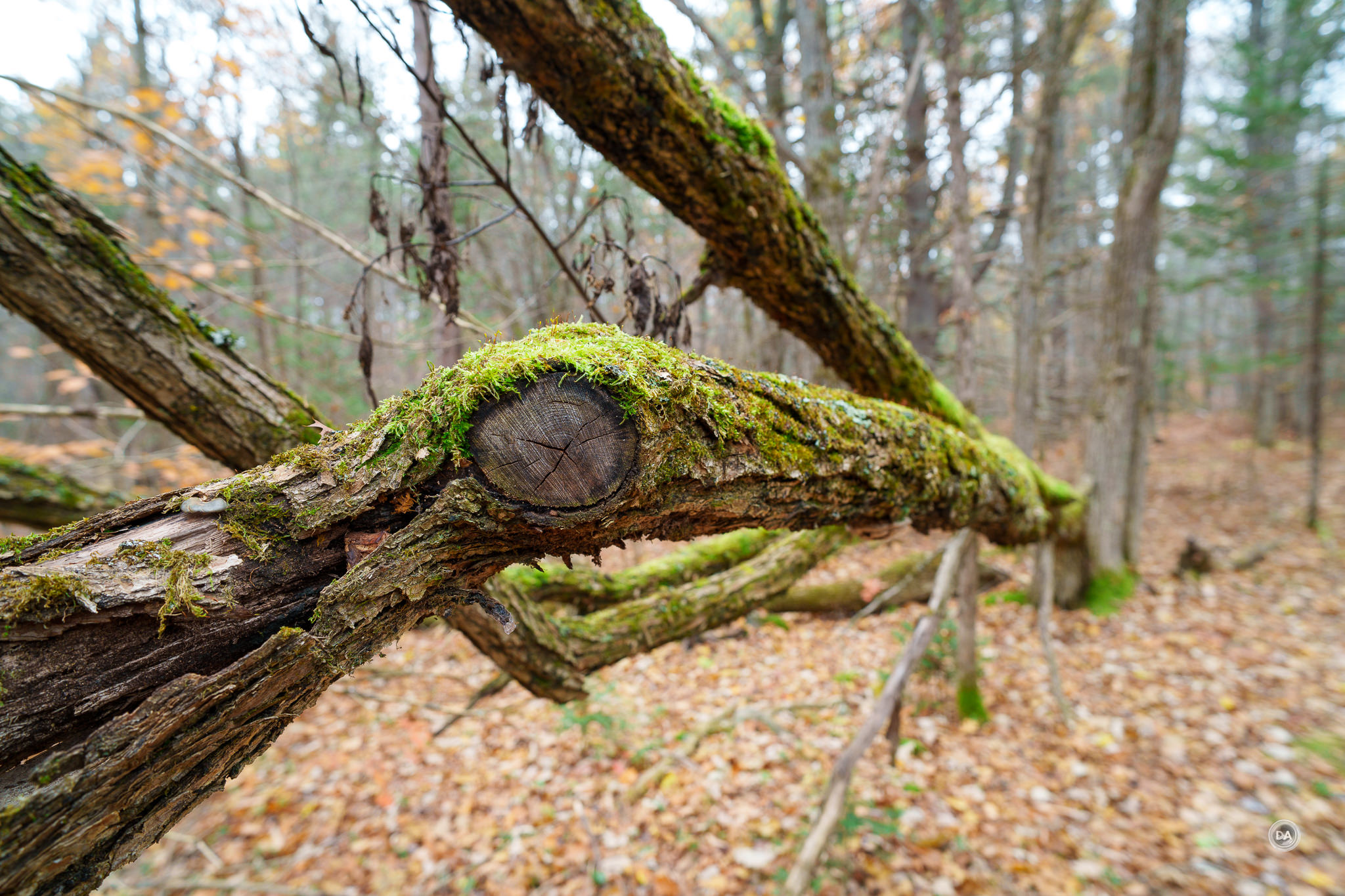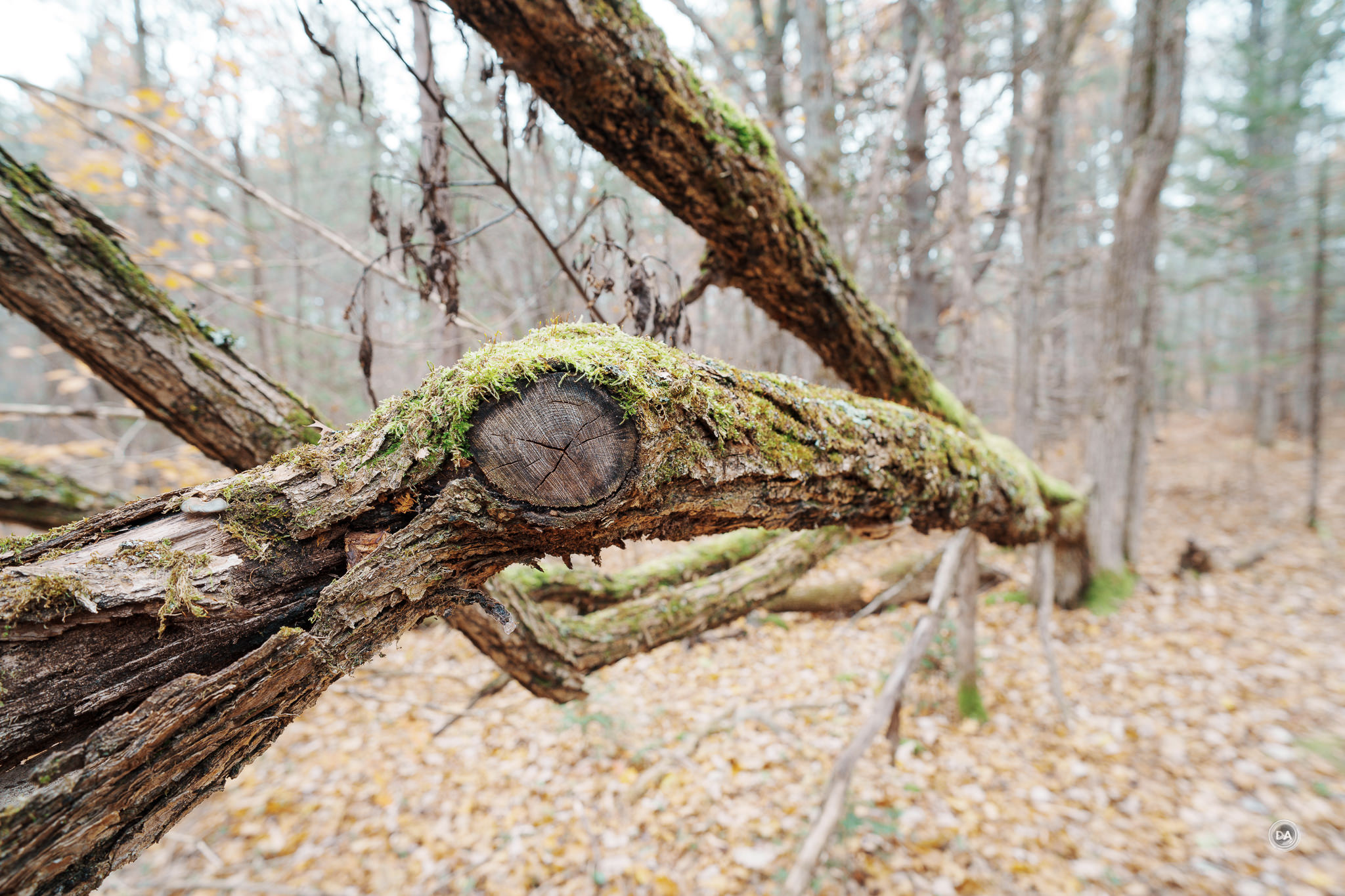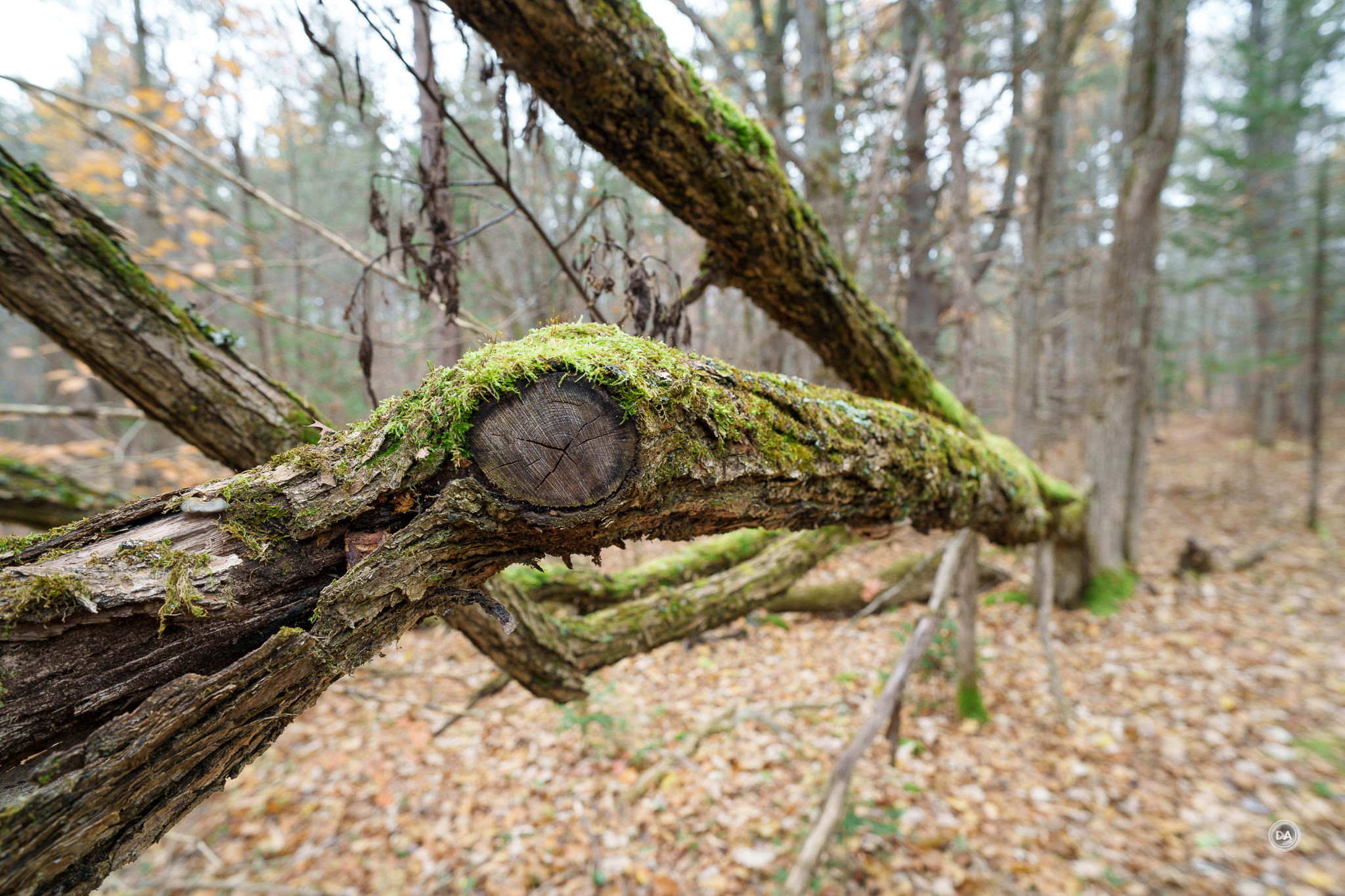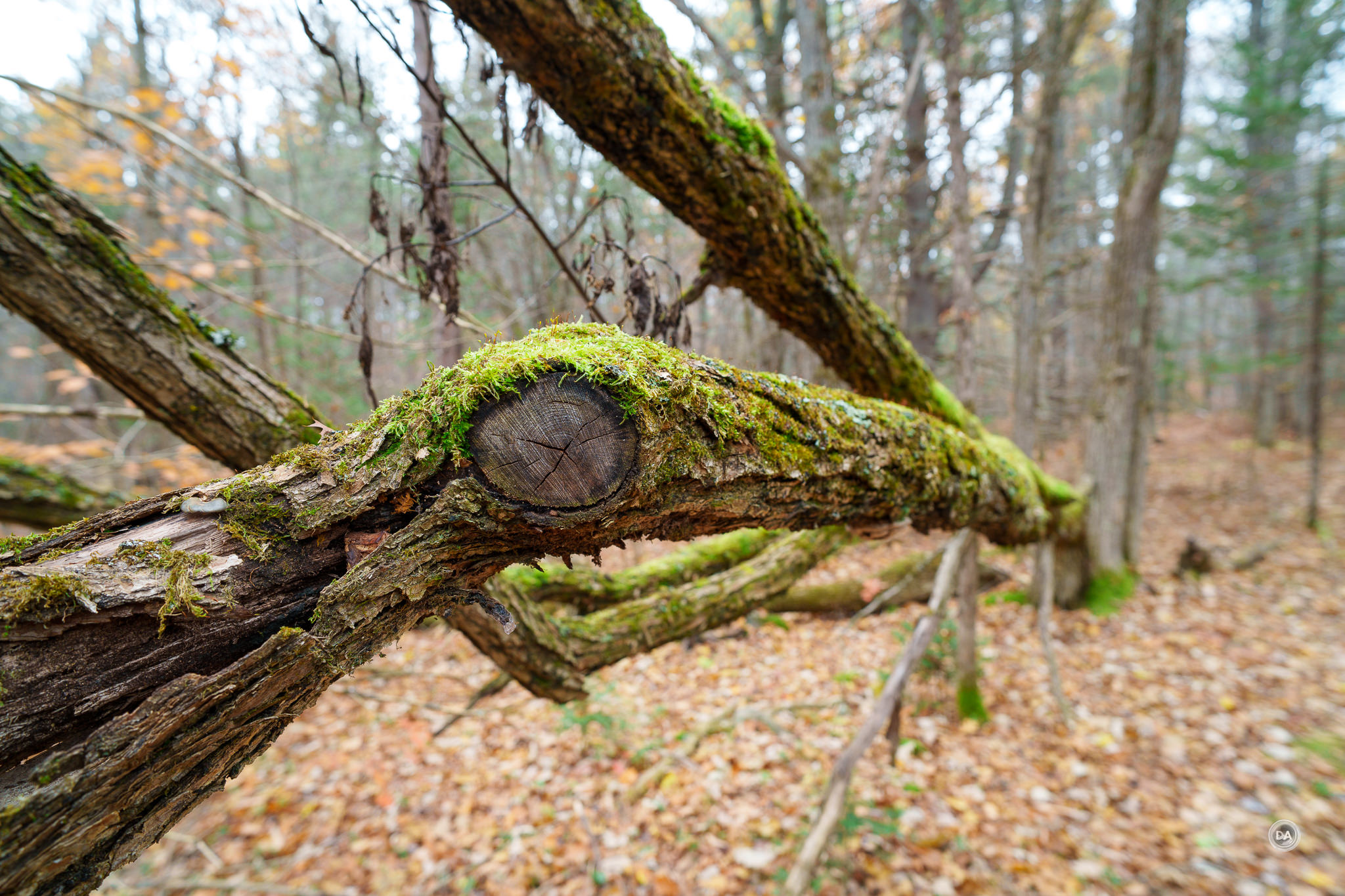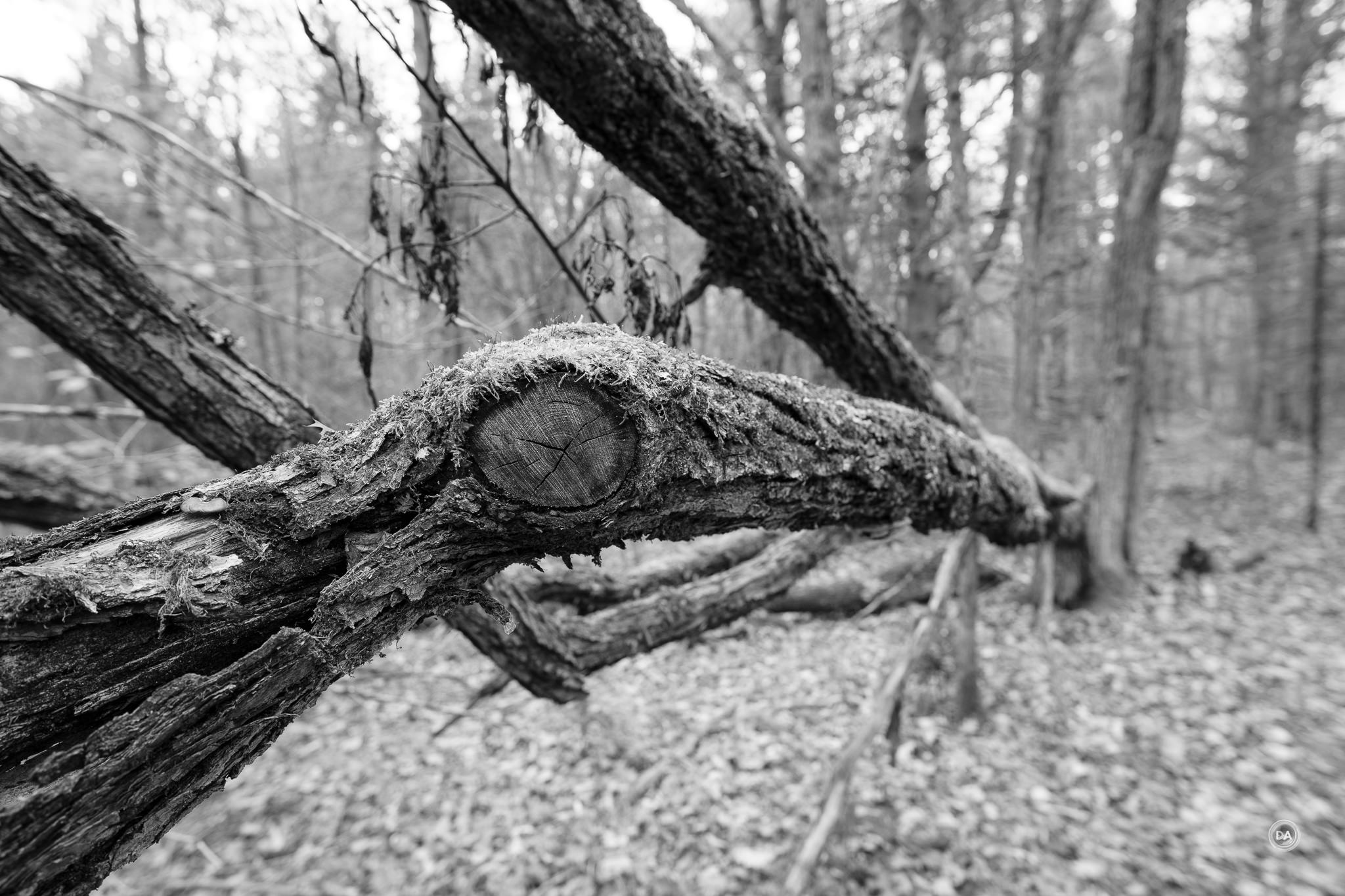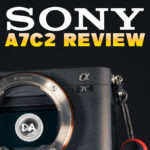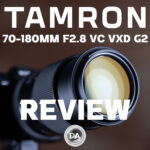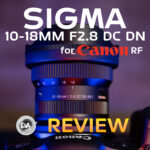
Several months ago I reviewed the compact Sony a7CII, which is in essence the internals of the a7IV though in a compact body more similar to Sony’s rangefinder style a6700 APS-C. Obviously Sony’s original a7C camera was popular enough to breed a successor, and, in fact, the lineup has expanded to include a new high resolution model which is the subject of today’s review. The Sony ILCE-7CR (or more commonly, a7CR) is the new high resolution option, taking the 61MP sensor from the Sony a7RV and housing it in a compact body. While the a7CR doesn’t inherit all of the larger a7RV’s features, it does get most of what makes that camera great at a lower price point nearly $1000 less. From the opposite perspective, the a7CR costs $800 more than the a7CII (33MP), so you are paying a premium for all of those extra pixels! So is the a7CR worth it? You can find out all of my thoughts in the video review below…or just keep reading.
Follow Me @ YouTube | Patreon | Instagram | Facebook | DA Merchandise | Flickr | 500px
Thanks to Sony USA for sending me a review loaner of this camera. As always, this is a completely independent review.
In many ways it makes little sense to buy a compact camera and then attach a large lens to it, so here’s a list of great compact lens options for the a7CR that I’ve reviewed along the way (my reviews are hyperlinked).
- Sony FE 20mm F1.8 G
- Sony FE 24mm F2.8 G
- Sony FE 40mm F2.5 G
- Sony FE 50mm F2.5 G
- Sony Zeiss FE 55mm F1.8
- Sony FE 35mm F1.8
- Sony FE 85mm F1.8
- Samyang AF 18mm F2.8
- Samyang AF 24mm F1.8
- Samyang AF 35mm F1.8
- Samyang AF 45mm F1.8
- Samyang AF 75mm F1.8
- Sigma 17mm F4
- Sigma 20mm F2
- Sigma 24mm F3.5
- Sigma 24mm F2
- Sigma 35mm F2
- Sigma 45mm F2.8
- Sigma 50mm F2
- Sigma 65mm F2
- Sigma 90mm F2.8
- Viltrox AF 20mm F2.8
This isn’t necessarily an exhaustive list, but these are at least some of the lens that came to mind. Bottom line is that there are a wide variety of compact prime lenses that will enable you to really travel light, and most of these lenses are very strong optically as well. Here’s one from a the Viltrox AF 20mm F2.8 – a lens that costs only $150:

Here is a breakdown of some of the key features of the a7CR:
- 61MP Full-Frame Exmor R BSI Sensor
- BIONZ XR Image Processor
- Shooting Up to 8 fps, ISO 50-102400
- 240.8MP Pixel Shift Multi Shooting
- 10-Bit Full-Frame 4K60p Video
- S-Log3, S-Gamut3, S-Cinetone, User LUTs
- 7 Stops of In-Body Image Stabilization
- 693-Point Phase Detection, 79% Coverage
- 2.36m-Dot OLED Electronic Viewfinder
- 3″ 1.03m-Dot Vari-Angle LCD Touchscreen
- Internal Mic + Inputs, USB Streaming
- Pixel shift multi-shooting (240.8MP)
- In camera focus bracketing (up to 299 frames)
The list is fairly similar to that of the a7CII with a few areas of differentiation. The sensor is obviously different, but I also noted that the burst rate is a bit slower (8 vs 10 FPS), the ISO is limited to 102,400 rather than 204,800, and there are fewer AF points (693 vs 759) along with a lower percentage of coverage with AF points (79% vs 94%). The real reason to buy the a7CR, however, is the resolution. Sony 61MP sensor is currently the best high resolution full frame sensor on the market and can produce absolutely stunning images.

The MSRP on the a7CR is $2998 USD, so it isn’t an inexpensive camera. But I would definitely spend the extra $500 for it over the similar resolution Sigma FP-L camera which I reviewed a few years ago. So is there a market for a $3000 high resolution compact camera?
Sony a7CR Build, Handling, and Features
The basic shape and size of the new a7CR is identical to the a7C2. It is 4.9 (W) x 2.8 (H) x 2.5″ (D) or 124 x 71.1 x 63.4 mm, while the older a7C was 4.9 x 2.8 x 2.4″ / 124 x 71.1 x 59.7 mm. The two new cameras have a slightly deeper grip, which is a welcome change in my book as it makes holding the camera a little easier. The a7CR is 1 gram heavier than the a7C2 at 515g (1.1lb), though that weight is with the battery and memory card inserted. The feel of the grip is pretty good, though those with larger hands like myself will find the camera not tall enough; I have no place to put my pinky finger and the lower pad of my palm. It all ends up having to curl under the camera when gripping it. In this case Sony helps with this problem by including a grip extender called the GP-X2 which adds a little more height to the camera and gives that pinky of mine a place to go.

I like this approach, as while shooting in my home community I used the grip extender, but when I decided to travel light on a trip to Arizona over the holidays I left the extender at home and kept the camera compact for storage and weight.
The a7CR comes in to finish options – the traditional black or the silver finish option that I’ve reviewed here. I do think the silver finish is a nice, stylish look, though some may prefer the more discrete look of the black.

The physical control layout of a7CR is essentially identical to the a7C2. Both cameras have some key upgrades over the original a7C that really help the ergonomics.
Starting with the front view we see a key addition: there is a control wheel below the shutter button. That missing wheel was my top complaint in my review summary of the a7C. Good camera control requires at least three wheels, and I really missed that typical control touchpoint from the a7C. The addition of that wheel on the a7CR makes using it more functional.

You might also notice that while Sony experimented with a different type of grip pattern with the a7C, they’ve returned the familiar “leather” texture style shared with most of their camera models. I noted in my review of the a7C that the new texture looked cool but didn’t provide as much grip as the older style. Sony must have agreed, as they have scrapped the new and gone back to the old on both new models.
Switching to the rear view everything looks mostly the same but with the addition of a C1 (custom) button next to the menu button. Sony moved the cut-out area that allows you to grip the screen to swing it out to the bottom and utilized that area at the top of the camera to center the MENU button more and add the C1 button that was missing on the first a7C (which takes care of another complaint of mine). The “trash” button has a secondary label of C2, giving these buttons a more familiar layout to Sony shooters from other cameras.
A look at the top shows a few important improvements. They have repositioned the ON/OFF dial so that it doesn’t interfere with the new front control dial, and also enlarged the shutter button, which is a good improvement as it will be easier to use while wearing gloves now. Sony also added a secondary dial underneath the mode dial that allows to switch between separate setups for Stills | Video | S&Q (slow and quick). This allows you to have multiple control setups (and even custom menus) for your photography and video setups, enabling this to be a better hybrid camera. Like other recent models the “hotshoe” is Sony’s newer “Multi-Function” shoe compatible with digital audio, and Sony (along with a few other brands) have continued to release new microphones that leverage that capability.

A more subtle change is that they have removed the markings from what is (by default) the control wheel for exposure compensation. This allows more flexibility in assigning a different area of control to that wheel if so desired.
Most of the other controls are the same in location and default function. My only real navigational complaint is that we still don’t have a navigational joystick, which I do miss.
The LCD monitor is a vari-angle (articulating) 3.0″ screen as before, but the resolution has been slightly improved to 1.04M dots of resolution (from 921,600 dots before). Sony’s touch has also improved over the past few years, and one now has full control of all menus via touch.

On the left side of the camera the ports and card slot is essentially the same though with a very slight reorganization. The top one opens up to reveal that the USB-C port has moved up to join the microphone input. You can charge the camera’s battery in camera via the USB-C port so long as your power source has the correct power delivery spec. The middle compartment opens to reveal (thankfully!) the memory card slot. I despise when the memory cards are relegated to the bottom of the camera with the battery; this is much easier to access. There is a single UHS-II rated SD card slot located there.

The bottom compartment opens to the side and reveals a headphone monitoring jack and a micro-HDMI port. I recognize that the size of this camera makes having a full size HDMI port difficult, but micro-HDMI always feels a little flimsy for serious video making.
The viewfinder is still located to the left rather than central to the camera, and I continue to find that a frustrating position ergonomically. The viewfinder is mostly similar (0.39-inch OLED panel with 2.36 million dots and a maximum refresh rate of 120Hz), but it is slightly improved with better magnification (0.70x vs. 0.59x) and a longer eyepoint (22mm vs. 20mm). That’s not enough of an improvement to me, however, as the viewfinder remains a weak link in the design and I don’t particularly enjoy using it.
The a7CR continues to utilize the same NP-FZ100 common across Sony’s full frame lineup in recent years, though in the a7CR we only have a CIPA rated 530 frames when using the monitor or around 490 images when composing with the EVF. The real world battery life still feels pretty good relative to other full frame models from Sony, though the original a7C was considerably better.

One interesting touch I noted with the grip extender is that it is designed with a hinge near the portion covering the battery to allow it to swing out of the way for easy access to the battery compartment.

The a7CR sports an aluminum alloy chassis that has a wide variety of seal point to ensure the camera is ready for all weather conditions.
One core improvement is to the miniaturized IBIS system. The IBIS in the a7C was rated at 5 stops of assistance, but the new and improved version in the a7C2/a7CR is rated at a whopping 7 stops of assistance. In video mode you also have the option of selecting “Active” stabilization which throws a little digital/gyro assistance in there while moving to give more stabilization, though at a very minor 1.1x crop.
One physical limitation I ran into a fair bit was the 1/4000th shutter speed limit for the mechanical shutter. I happened to do a fair bit of testing of the E-mount version of the Viltrox Pro AF 27mm F1.2 with the a7CR in APS-C mode, and that bright aperture meant that 1/4000th was easily hit. I do understand the constraints in a compact camera, but that slow shutter limit on a $3000 camera was surprising. It’s not hard to blow out images a bit when using a large aperture lens in daylight with an 1/4000th shutter speed.

While I personally prefer a camera with a little more meat on its bones, I think that Sony has done a great job of improving the ergonomics and usability of the a7CR while staying true to the mandate of keeping the camera small and light. I took the a7CR on a trip to Arizona with me and did a number of hikes in the foothills through the desert. The light weight of the camera made it a treat to pack even on a lightweight strap like the Peak Design Leash. I scarcely noticed the weight of the camera and loved having such great resolution in a compact package. Throw a tiny lens like the Brightin Star 28mm F2.8 that I recently reviewed and you have a near-pocketable combo.

The overall ergonomics of the Sony’s compact body are significantly improved over the first generation like the a7C. The additional control points allow me to more easily imitate the setup of my normal Sony cameras, and the changes that Sony has made are subtle but add up to a significantly improved camera. I think that just about everyone can appreciate the changes Sony has made here.
Sony a7CR Autofocus Performance
The a7CR sports a hybrid AF system with 693 phase and 425 contrast-detect autofocus (AF) points that covers approximately 79% of the sensor according to Sony. The AF point array is identical whether shooting photos or video. I was surprised at the coverage percentage, as the original a7C sported a similar number of AF points but Sony claimed 93% sensor coverage. In real world use, however, I can’t say that I noticed the difference…even shooting action.

The rated low light sensitivity is -4Ev with a f/2 aperture at ISO 100, which isn’t as robust as what, say, Canon claims, but again I haven’t noticed any practical low light issues. The camera focuses well and accurately even in very dim conditions.

For a while the marketing trend among cameras was for ever more AF points, but that has faded as A) cameras reached a saturation point where AF points already cover most of the frame and B) the emphasis shifted to AI functionality and the ability of cameras to detect and track subjects accurately and even predictively. So it stands to reason that Sony’s emphasis here is on the improved processor (BIONZ XR) and the AI processing unit that allows for more trackable subjects and more intense tracking of some existing subjects.

Trackable subjects now include humans, animals, birds, insects, car/trains and airplanes, and Sony claims a 60% improvement when tracking humans (including the ability for the AI to track human poses) and a 40% improvement when tracking animals and birds.

I was impressed with the autofocus performance of the original a7C, but there’s no question that autofocus has gotten more sophisticated since that point. The AI tracking applies to video recording as well as photos.
I took the a7CR to a pickup basketball game and had an easy time tracking action (even if the burst rate is a far cry from my typical sports camera – the Alpha 1). I used multiple lenses (one by Sony, another by a third party), and had excellent accuracy with both.






I used the camera for a trip to Arizona where (among other things), I spent a lot of time with family for the holidays. I took photos of fast moving nieces and nephews, captured family moments in various lighting conditions, and I repeatedly ended up with well focused results in all of these varying circumstances.



I even ran into a fan at the Lucid store in Scottsdale, and he posed for a photo.

Sony’s Eye AF is very sophisticated at this point, so shooting portraits is quite effortless. I had no probably getting completely repeatable portrait results with a number of lenses.



As with the a7C2, the fly in the ointment when it comes to recording action is in the buffer depth. The autofocus system seems to have no problem in tracking action, but there are definite limits to the frame rate (a maximum of 8 FPS) and to the amount of images you can record before the buffer fills. This is one of the primary areas of performance where the a7CR falls well behind the a7RV. The a7RV can capture images at a slightly faster 10 FPS (not radically better), but the buffer depth is massive by comparison. With the a7RV one can get up to 550 Lossless Compressed RAW images (my preferred format), but on the a7CR that number drops to an abysmal 16 frames (only 2 seconds of burst time).
Here’s a breakdown of the various file formats and their recording limits:
- JPEG Extra Fine L: 48 frames
- JPEG Fine L: 320 frames
- JPEG Standard L: over 1000 frames
- RAW (Compressed): 36 Frames
- RAW (Lossless Compressed): 16 frames
- RAW (Uncompressed): 14 frames
If you combine RAW and JPEG, expect those numbers to drop a bit further. There is a consequence for increasing having a massive resolution sensor but not improving the storage medium. Sony improved the performance of the high resolution a7R series in this generation by adding CFExpress Type A compatibility, which in turn allows for much faster transfer of information. Sony elected not to do that in their compact lineup, so if you want the ability to capture large bursts, the a7C2 or a7CR are not your best options. They have the tracking capabilities, but don’t have the buffer depth to back those tracking capabilities up.
On a more positive note, Video AF was solid. Sony has really worked to tweak both the focus system and the AI machine learning to allow for essentially equal autofocus performance for either stills or video. This is a true hybrid camera, though if your priority is video capture you may have few reasons to choose the much more expensive a7CR over the equally capable (for video) a7C2. But if you are looking for both a high resolution stills camera along with a competent compact video camera, the a7CR is an attractive option. Sony has so many great lenses at this point for the system, and that includes a lot of lenses that are both compact and well equipped for video capture. The Samyang V-AF series I mention below are intriguing options.

Outside of the buffer issues I’ve detailed, I had a very position autofocus experience. The camera is compact and easy to bring along, but it is a serious performer when it comes to autofocus.
Video Specs and Performance
The a7CR has a reasonably robust video feature set, though, as before, the limitations are largely centered around the speed of the storage medium. There won’t be any 8K or 4K120 options that require faster readout. The a7CR has slightly better 4K options than the a7C2, as you can shoot 4K60 with a very minor 1.2x crop, making it easier to retain a wider angle of view (the a7C2 only allowed for 4K60 in Super35 mode). Full sensor readout (no crop) requires shooting in the lower frame rate 4K30 mode. You also have the option to shoot up to 4K60 in Super35 mode, or with a 1.5x crop. There are plenty of APS-C lenses that will allow you to retain a wide angle of view when shooting in Super35. Super35 footage in general will give you slightly sharper results at it is oversampled from 6.2K footage, while the full frame readout will be slightly lower resolution as it is sub-sampled from that area of the sensor. The a7CR allows for 10-bit 4:2:2 internal recording and an All-Intra compression option up to 600Mbps. Here’s a look at the full list of video modes available:
MOVIE RECORDING FORMAT (XAVC HS 4K)3840 x 2160 (4:2:0, 10 bit) (Approx.): 59.94p (150 Mbps/45 Mbps), 50p (150 Mbps/75 Mbps/45 Mbps), 23.98p (100 Mbps/50 Mbps/30 Mbps), 3840 x 2160 (4:2:2, 10bit) (Approx.): 59.94p (200 Mbps/100 Mbps), 50p (200 Mbps/100 Mbps), 23.98p (100 Mbps/50Mbps)
MOVIE RECORDING FORMAT (XAVC S 4K)3840 x 2160 (4:2:0, 8 bit) (Approx.): 59.94p (150 Mbps), 50p (150 Mbps), 29.97p (100 Mbps/60 Mbps), 25p (100 Mbps/60 Mbps), 23.98p (100 Mbps/60 Mbps), 3840 x 2160 (4:2:2, 10 bit) (Approx.): 59.94p (200 Mbps), 50p (200 Mbps), 29.97p (140 Mbps), 25p (140 Mbps), 23.98p (100 Mbps)
MOVIE RECORDING FORMAT (XAVC S HD)1920 x 1080 (4:2:0, 8bit) (Approx.): 119.88p (100 Mbps/60 Mbps), 100p (100 Mbps/60 Mbps), 59.94p (50 Mbps/25 Mbps), 50p (50 Mbps/25 Mbps), 29.97p (50 Mbps/16 Mbps), 25p (50 Mbps/16 Mbps), 23.98p (50 Mbps), 1920 x 1080 (4:2:2, 10 bit) (Approx.): 59.94p (50 Mbps), 50p (50 Mbps), 29.97p (50 Mbps), 25p (50 Mbps), 23.98p (50 Mbps)
MOVIE RECORDING FORMAT (XAVC S-I 4K)3840 x 2160 (4:2:2, 10bit) (Approx.): 59.94p (600 Mbps), 50p (500 Mbps), 29.97p (300 Mbps), 25p (250 Mbps), 23.98p (240 Mbps)
MOVIE RECORDING FORMAT (XAVC S-I HD)1920 x 1080 (4:2:2, 10bit) (Approx.): 59.94p (222 Mbps), 50p (185 Mbps), 29.97p (111 Mbps), 25p (93 Mbps), 23.98p (89 Mbps)
Sony’s menus make it pretty easy to find what movie format you want and quickly employ it, and remember that you have the ability to set up custom buttons and menu options separately for video recording.

Here’s a few other video specific specs courtesy of Sony:
- Slow & Quick (S&Q) mode allows shooters to capture 4K video at specified steps between 1-60 fps and Full HD between 1-120 fps, depending on the format. These settings will allow you to slow down action as well as speed up a slow-moving scene.
- The S-Log3 and S-Gamut3.Cine gamma curves allow for more than 15 stops of dynamic range and for increased post-production flexibility, including matching video from other Sony Cinema Line cameras.
- S-Cinetone can be used to deliver distinct colors and healthy-looking skin tone rendering that is based on technology from the professional Cinema Line cameras, such as the VENICE. This color profile offers natural mid-tones, soft colors, and especially well-controlled highlights.
- Creative Looks can be baked into the recorded footage to create a specific mood during recording and minimize the need for editing.
- User-created LUTs and presets can be set for accurately monitoring footage or previewing a specific look during shooting and can be applied to the camera’s monitor, EVF, or HDMI output.
I shot a number of different video styles and formats, from run and gun footage using a baked-in picture profile to Log recording. Performance is pretty much what I would expect, and while the a7CR isn’t one of Sony’s top video models, this is still a very capable video camera. Here’s a screenshot from one of my video clips, unedited.

There are a lot of positives here, however. Sony’s sensors have excellent dynamic range, so if you shoot in S-Log3 you can get 15+ stops of editing room – extremely useful! One of the main advantages relative to some competitors is that Sony’s video tracking and AI learning is pretty much top notch, and the improved Steady Shot (IBIS) is excellent as well.
If you are more video focused, I really recommend the Samyang V-AF series as they really designed with hybrid video/stills capture in mind. You can see that there are a couple of these that I haven’t reviewed as they are either unreleased or I haven’t gotten a review copy yet.
- Samyang V-AF 20mm T1.9 Review | Image Gallery
- Samyang V-AF 24mm T1.9 Review | Image Gallery
- Samyang V-AF 35mm T1.9 Review | Image Gallery
- Samyang V-AF 45mm T1.9 Review | Image Gallery
- Samyang V-AF 75mm T1.9 Review | Image Gallery
- Samyang V-AF 100mm T2.3 Review | Image Gallery
These lenses are a real treat to use on Sony’s compact cameras, as they have a lot of great video-specific features and weigh in at just 280g. There are a lot of other great compact lenses that work well for video available in E-mount, which has perhaps the greater diversity of lenses available for it of any camera system in history.
Sony a7CR Sensor Performance
This is really the headline area for the a7CR, as the real reason that anyone will purchase it over the much cheaper a7C2 is that it inherits the massive 9504 x 6336 pixels of resolution from the a7RV. This is an incredible sensor that provides rich, beautifully detailed images.


And, thankfully, Sony has finally opened up the ability to choose lower resolution points for Lossless Compressed RAWs as well as JPEGs, which makes this camera infinity more versatile. You can choose L (large), M (medium), or S (small) Lossless RAW and JPEG options at these resolutions:
- 61MP (9504 x 6336)
- 26 MP (6240 x 4160)
- 15 MP (4752 x 3168)
This MRAW 26MP resolution point is particularly useful, as there are many situations in which 61MP is overkill and 26MP plenty for your needs. I particularly love this option when shooting events, as the APS-C mode is also 26MP, meaning that I can switch between these modes at the press of a button and have different framing options available at an identical resolution point. It’s like having a built in teleconverter, but without the limitations. It also means that the a7CR is a really compelling option for those who would like to have access to an APS-C camera, too. The 26MP APS-C mode matches the highest resolution currently available on a Sony APS-C body, and it means that I could use great APS-C lenses like the Viltrox AF 27mm F1.2 at a nice resolution point.

The a7CR allows for up to 14 bit RAW recording and also supports 10-bit HEIF format recording.
There is always some give and take with high resolution sensors, though Sony has been tweaking the performance of this particular sensor for a few years and is getting the best out of it. We’ll take a deeper look at the performance in our tests.
Dynamic Range
Dynamic range has become one those topics debated ad nauseum on photography forums and harped on by certain reviewers to the place where some perspective has been lost on the topic. I can definitely say that there are a number of situations where improved dynamic range gives the photographer (and particularly the post-processor) more latitude to fulfill their vision. This could be in the ability to recover a blown-out sky or shadowed area as a landscape photographer or the ability to balance a foreground subject with a background or sky for portrait photographers. I frequently use good dynamic range in portrait photography to bring up exposure on the faces of subjects when shooting with only available light. Lightroom/ACR has great tools for detecting subjects and creating masks for them, and good dynamic ranges makes it easy to add exposure to the subjects cleanly.
In this shot of a rail bridge, for example, dynamic range allows me to reveal the detail of the underside of the bridge while also retaining some information in the sky.

As DR has improved dramatically in recent years, I have found that I do exposure blending/HDR less often, as it is often possible to get the result I want out of a single exposure. This helps simplify my workflow and yet create images that fulfill my artistic vision. Dynamic range is the range of visible light that a sensor can record, and according to Photons to Photos, the a7RV (they haven’t yet tested the a7CR) manages to squeeze just a hair more dynamic range (11.7 vs 11.62 stops) out of the 61MP sensor than what the a7RIV did. But wait, you say, doesn’t Sony claim over 14 stops? Yes, but if you look specifically, they are referring to 14+ stops when using the LOG3 profile for video. The truth of the matter is that there is a lot of different standards for how dynamic range is tested, so I like a site like Photons to Photos as they use the same methodology over a wide range of cameras and I can look through their findings and compare them to other cameras. By their standards, you can expect the dynamic range or the a7CR to be better than about 99% of other full frame sensors and only consistently bested by Medium Format sensors. This is a fantastic camera for shooting landscapes, portraits, or any other subject where strong dynamic range can be useful. This available light shot of my daughter-in-law shows the ability to pull up exposure on her while also having enough latitude to leave some detail in the sky.

That might mean using DR to balance the exposure in a landscape image, recovering some of the sky while also bringing up some of the information in the shadows, leaving a nice looking exposure afterwards.

I have a standard battery of tests that I like to run cameras through to examine their dynamic range. We’ll start with shadow recovery. I established a proper exposure as the base exposure (1/10th second at ISO 100, F5.6), and then purposefully underexposed progressively by 1 stop through to 5 stops. In post I add the exposure back to test how well the camera does with shadow recovery. We’ll use the 4 stop example first, and you can see how deeply crushed the shadows were in the original on the left and how well they have been recovered on the right.

Zooming in to a pixel level shows just how clean that recovery is:

There is little to no new noise inside the SLR in the recovered shadow area, and you can also see that all the information on the leather strap has been recovered cleanly.
At 5 stops things are usable but a little rougher. You can see some additional noise on the table surface along with some uneven pixels in the area that should be consistently shadowed.

Higher resolution models like this magnify results at a pixel level, and thus slight defects like this are more obvious.
In my experience modern cameras are much better at shadow recovery than they are at highlight recovery, but Sony sensors tend to be some of the best in this regard.
In this instance I purposefully overexposed by one, two, three, and four stops and then reduced that exposure in post to test highlight recovery. I typically see most cameras do reasonably well with recovering 2 stops of highlights, but a 3 stop recovery is rare, and a 4 stop recovery just doesn’t happen. Several things happen in overexposed images: there are “hotspots” where textures and details are blown out and various colors start disappearing. The a7CR (surprisingly) gives a flawless performance at 3 stops of overexposure, as all of the textures and colors are cleanly recovered without any leftover hotspots or faded areas.

I’m more impressed by the 3 stop recovery, which is pretty much flawless. You can see that the color swatches show a near perfect recovery of colors. The front of the SLR in my still life is typically one of the worst offenders in this test, as the metal surfaces tend to reflect light and cause blown out areas. Even at a pixel level all of those blown out textures are perfectly recovered.

If we try to push our luck and go for 4 stops, we do find our limit. I’m fairly impressed by the ability to recover textures, but you can see that colors are lost and the whole image has a dingy look that is the byproduct of unrecovered highlight information.

I’ve never seen any camera pull off a 4 stop overexposure successfully, and while the a7CR isn’t the first, it does deliver one of the best highlight recoveries that I’ve seen. I would say to slightly bias towards underexposure if you want to grab a huge range in a single image, but not by much. There’s a lot of room to recover in both directions that there is naturally there. All in all this 61MP Sony sensor continues to impress when it comes to dynamic range.
ISO Performance
The Sony a7CR has a native ISO range of 100–32000 with extended levels that go as low as 50 and as high as 102,400. I typically don’t recommend going into the extended levels (particularly on the high end), as you get reduced performance. ISO is typically the area where high resolution cameras are the most compromised. All of those extra pixels mean that noise is going to be more obvious on a pixel level, and early high resolution models like the Canon 5DsR had a native ISO range that only went up to ISO 6400 but was most unusable by that point.
The a7CR fairs better than that, and images at higher ISO values like 12,800 are largely usable.

The sensor in the a7CR does a good job of holding color fidelity at higher ISO values (particularly in the native range) and pixel roughness isn’t bad. What holds it back is the emergence of a grid type pattern in what should be areas of even background. If we look closer at the image from above (at ISO 12,800) we can see that the wall behind the guitar (which should be even) has a pattern in it.

This tends to show up specifically in images with large flat areas and will be less of an issue with other type of images. A deep crop from one of my test images at ISO 12,800 with more texture information shows none of the grid pattern.

At a global level there is little to distinguish ISO 100 from ISO 3200.

At a pixel level there is slightly less contrast in the shadows and a bit more noise, but overall the image is perfectly usable.

Between ISO 6400 and 12,800 the noise in the shadows becomes rougher and the pixels more uneven. You’ll see various “hot pixels” in what should be a purely uniform area.

That pattern gradually intensifies at ISO 25,600 and then at 32,000. There’s less contrast at 32,000 than 25,600, so I would recommend keeping 25,600 as your extreme option and don’t go further.

Venturing into the “expanded range” is not recommended. There’s a bit of a green color shift that starts into the image (the typical shift for Sony sensors) and contrast gets robbed due to rough, uneven pixels.
If you are in a situation where you are in low light, however, you might want to elect to shoot in MRAW. The oversampling to get to the lower 26MP of resolution does allow images to at least appear cleaner. While part of that is a lower magnification level at 100%, I do think there is also less of the grid pattern issue.

This is a valid way to get cleaner looking images if you don’t need the full resolution in low light situations.
The a7CR can’t match Sony’s lower resolution sensors for high ISO performance, but it does compete well compared to other high resolution cameras.
Color
Sony has slowly and steadily tweaked its color science over the past five years. The end result is a more nuanced performance that is very close to the level of Canon and Fuji, though I do very slightly prefer those brands for their color. One thing I will say is that Sony’s cameras do a better job with white balance than what either of those other brands do. When doing my chart tests, for example, I always have to correct the white balance when testing on either Canon or Fuji, but my Sony test cameras deliver a consistently good white balance with a variety of lenses. Sony has always done a good job with colors for landscapes:

What has improved over time is their skin tones, which are now more natural with a variety of different skin types. Here’s an uncorrected image that shows a few different skin tones, all of which are rendered accurately.

Sony has updated their “creative looks” with some new options. This is their version of Fuji’s film simulations, and while Sony’s options aren’t as varied or interesting as Fuji’s, there are some widely different ways to approach your images. I’ll show a series of images from the a7C2 that illustrate the various pictures styles (all are the same in the a7CR). Here’s the original image.
What will follow is a series of the same image using Sony’s color profiles along with Sony’s descriptions of what each creative look does. Here’s that same image using  ST:Standard finish for a wide range of subjects and scenes.
ST:Standard finish for a wide range of subjects and scenes.
 PT:For capturing skin in a soft tone, ideally suited for shooting portraits.
PT:For capturing skin in a soft tone, ideally suited for shooting portraits.
 NT:The saturation and sharpness are lowered for shooting images in subdued tones. This is also suitable for capturing image material to be modified with a computer.
NT:The saturation and sharpness are lowered for shooting images in subdued tones. This is also suitable for capturing image material to be modified with a computer.
 VV:The saturation and contrast are heightened for shooting striking images of colorful scenes and subjects such as flowers, spring greenery, blue sky, or ocean views.
VV:The saturation and contrast are heightened for shooting striking images of colorful scenes and subjects such as flowers, spring greenery, blue sky, or ocean views.
 VV2:Creates an image with bright and vivid colors with rich clarity.
VV2:Creates an image with bright and vivid colors with rich clarity.
 FL:Creates an image with moody finish by applying sharp contrast to the calm coloring as well as the impressive sky and colors of the greens.
FL:Creates an image with moody finish by applying sharp contrast to the calm coloring as well as the impressive sky and colors of the greens.
 IN:Creates an image with matte textures by suppressing the contrast and saturation.
IN:Creates an image with matte textures by suppressing the contrast and saturation.
 SH:Creates an image with bright, transparent, soft, and vivid mood.
SH:Creates an image with bright, transparent, soft, and vivid mood.
 BW:For shooting images in black and white monotone.
BW:For shooting images in black and white monotone.
One final option not shown is  SE:For shooting images in sepia monotone.
SE:For shooting images in sepia monotone.
There are plenty of options to play with there. Obviously different looks are going to suit different scenes/subjects better than others, so developing some familiarity with them might be useful. Remember that you can also select any of these creative looks for video as well. You can check out many more images from the camera by visiting the image gallery here.
Conclusion
I’ve been curious to see what the market’s response will be to the a7CR. Initially the whole concept of mirrorless cameras was the paradigm of getting great image quality with smaller cameras and lenses, but mirrorless has not guaranteed smaller and lighter. It’s perhaps even less so now that basically no one is releasing new DSLRs (the last DSLR cameras from Canon and Nikon were released in 2020), which means that now there must be a mirrorless model for every photographer’s needs. But I also know from my audience that size matters to many photographers, and in this case “less is more”. I certainly think there is a significant group of photographers who personally want their gear to be smaller and lighter, and now they have a high resolution option.

The counterpoint to that is that Sony’s mirrorless cameras don’t tend to be particularly big anyway, so the a7CR with the grip extender attached isn’t really much smaller than the a7RV. But the a7RV also costs nearly $1000 more, and if your priority is purely image quality, then the a7CR represents a real value as it has the exact same sensor as the a7RV.

I didn’t love the ergonomics of the original a7C, but Sony has addressed a lot of the issues I raised in my original review of that camera and produced a camera that handles much better. I still don’t love the placement and performance of the viewfinder, but that’s part of what allows the camera to be so compact.
Autofocus performance was very positive in my tests, though this is not an action camera. The buffers are too shallow to allow for serious burst performance even if the AF can keep up. But most people probably aren’t shooting a lot of action, and the a7CR is going to do fine in most other situations.

If you don’t really need 61MP, the a7C2 remains an excellent option at $800 USD less, but if the idea of having a high resolution sensor in a compact body appeals to you, then the Sony a7CR is going to be your dream camera. Start saving up that $3000!
Pros:
- Huge resolution in a compact body
- Ergonomic improvements – missing dial and buttons are now here
- Included grip extender gives options
- Improvements to the touchscreen make navigation easier
- Love the ability to have a separate custom setup for video
- Improved IBIS is top notch
- Strong autofocus performance
- More AI tracking for both stills and video
- Good video options
- Excellent dynamic range
- Extremely useful MRAW and APS-C modes
- Significantly cheaper than a7RV
Cons:
- Buffer depth limits bursts
- Viewfinder specs underwhelming at this price point
- Grid pattern at high ISO
- No joystick
- CFExpress Type A compatibility needed
__________________________________________________________________________________________________
GEAR USED:
Purchase the Sony a7CR @ B&H Photo | Adorama | Amazon | Camera Canada | Sony Canada | Amazon Canada | Amazon UK | Amazon Germany
Purchase the Sony a7C2 @ B&H Photo | Adorama | Amazon | Camera Canada | Sony Canada | Amazon Canada | Amazon UK | Amazon Germany
Want to support this channel? Use these affiliate links to shop at: B&H Photo | Amazon | Adorama | Camera Canada | Amazon Canada | Amazon UK | Ebay | Make a donation via Paypal
Buy DA Merchandise https://bit.ly/TWIMerch

Keywords: Sony a7CR, Sony a7CR, ILCE-A7CR, a7CR Review, a7CR Review, Full Frame, Review, Review, Hands On, Dustin Abbott, Real World, Comparison, Sharpness, Bokeh, Flare Resistance, Autofocus, Image Quality, Sample Images, Video, Portrait, Photography, let the light in, #letthelightin, DA, Weather Sealing, #ILCE-A7CR

